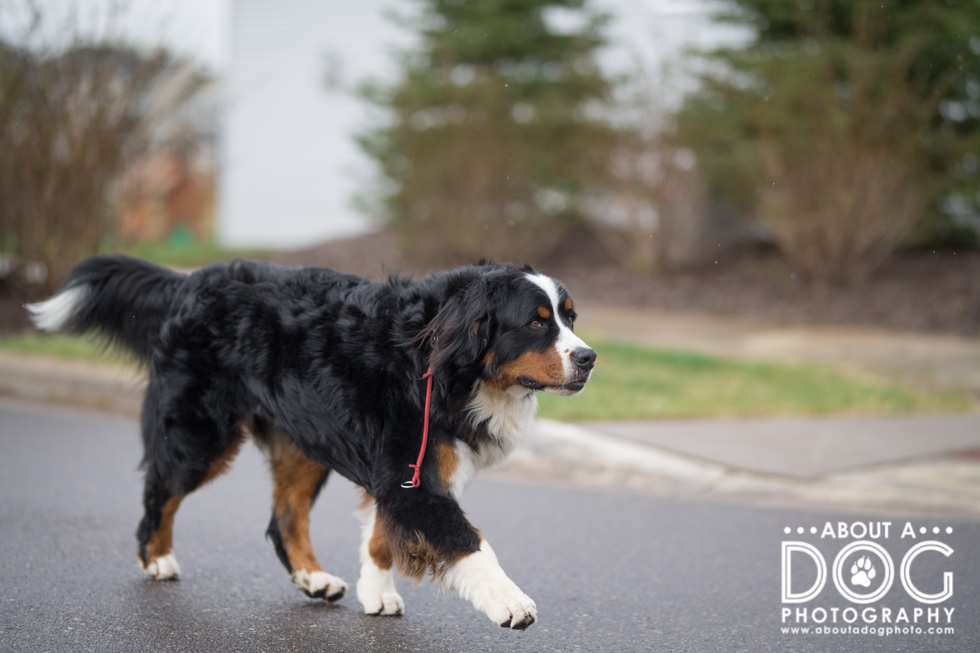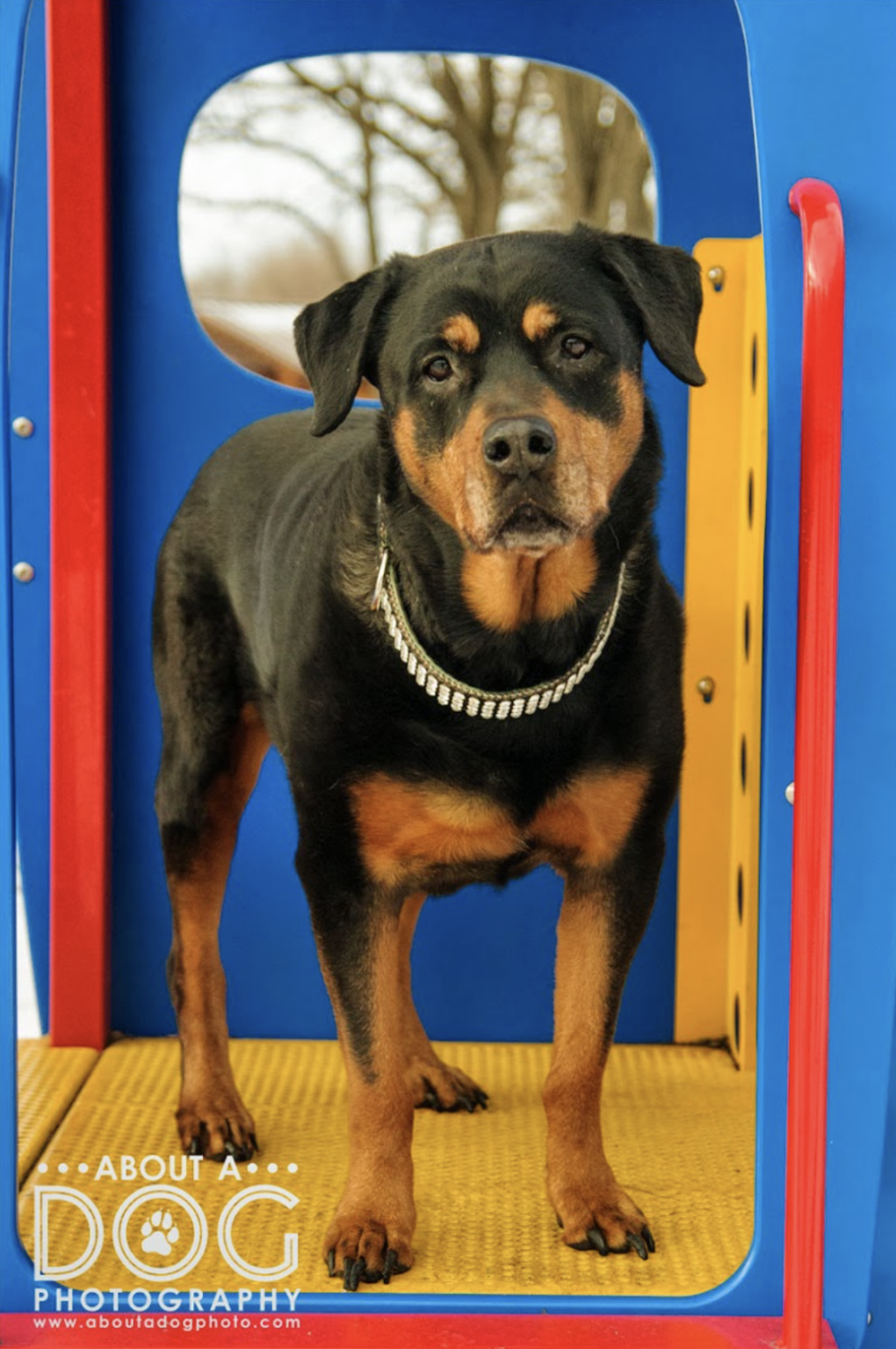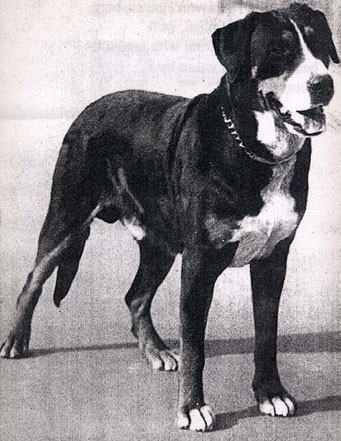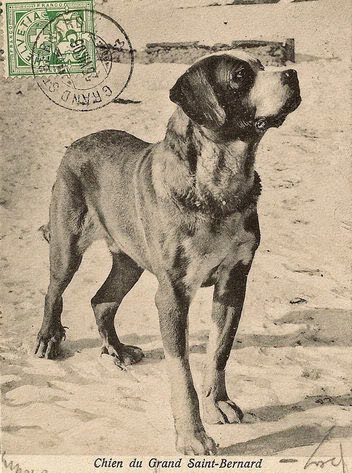The working dog. You may have visions of German Shepherds on the police force, Bloodhounds with their noses to the ground, Dalmatians escorting firetrucks, Border Collies herding sheep and an extensive group of service dogs working in everything from assistance to scent work. True these dogs all have jobs which means they are working, yet (excluding the undefined dog types of service dogs) NONE of them are actually working dogs! Or at least not in the working dog breed classification of the AKC! (UKC outlines guardian dogs / mastiffs instead of a working class!)
German Shepherds are in the HERDING class! They are grouped with the Border Collie, Australian Shepherd (not from Australia!), Collies and Corgis!
Bloodhounds are in the… yup you guessed it HOUND group! (And props to the Bloodhound “Trumpet” being best in show at the 2022 Westminster Dog Show!).
Dalmatians are in the NON-SPORTING group! This is where Bulldogs, Bichon Frise, Boston Terriers, Shiba Inus & Poodles are!
Working Group is defined by the AKC as: Quick to learn, intelligent, strong, watchful & alert. Bred to aid humans, they excel at guarding property, pulling sleds & performing water rescues. They make stellar companions, though often being large & naturally protective they need ample & proper training and socialization. The Working Group isn’t always the best fit for a first time dog owner.
Breeds include:
- Akita
- Alaskan Malamute
- Anatolian Shepherd Dog
- Bernese Mountain Dog
- Black Russian Terrier
- Boerboel
- Boxer
- Bullmastiff
- Cane Corso
- Chinook
- Doberman Pinscher
- Dogo Argentino
- Dogue de Bordeaux (French mastiff)
- German Pinscher
- Giant Schnauzer
- Great Dane
- Great Pyrenees
- Greater Swiss Mountain Dog
- Komondor
- Kuvasz
- Leonberger
- Mastiff
- Napolitan Mastiff
- Newfoundland / Landseer
- Portuguese Water Dog
- Rottweiler
- Saint Bernard
- Samoyed
- Siberian Husky
- Standard Schnauzer
- Tibetan Mastiff
Now, not only do I love dogs, but I love history & origins of things. Cue the historical research into each of the working class breeds!
The findings were rather intriguing. Some breeds pull their lineage from the ancient days of early domestication (we’re talking after the family tree branched into ancestor wolves & possible protodogs 40,000 to 30,000 years ago) while others were designs of the early 20th century.
Breeds in themselves were defined & designed in the mid 1800s onward as Victorian interest in categorizing, grouping and standardizing shifted into dogs. The AKC / American Kennel Club was formed in 1884 followed by the UKC / United Kennel Club in 1898. Dog shows became fashionable and the “sport” of dogs – breeding, showing, trialing – rose in popularity. The modernization of the breeds we love and know had begun.
In 1885 there were 24 breeds of dogs registered with AKC. By 1898, the French Bulldog pushed the number to 51 registered breeds. 100 years later, in 1995, there were 140 breeds registered with the Greater Swiss Mountain Dog rounding out the number! Today you can find 197 breeds registered under the AKC & clustered into one of the 7 groups – working, herding, hounds, non-sporting, sporting, terrier & toy.
Back to the working group & their breed histories. TONS of information, much more than a single blog post will be able to broadcast, so each breed will get a couple short tidbits of info + their 2021 AKC popularity ranking!
Additionally a curious observation – most dogs in the working class are large or giant sized with the exception of the German Pinscher & Standard Schnauzer. Many were livestock guardians & watchdogs, and often were employed as draft dogs. Interestingly the Greater Swiss Mountain Dog, Leonberger, Mastiff, Rottweiler & Dogue de Bordeaux all have mentions throughout their history of being butcher’s dogs (Metzgerhunde) as well as being draft & watchdogs. And the large to giant size? Attributed to ancient bloodlines that descend from molossers, mastiffs and huge wolves.
Neat facts about the breeds + their 2021 AKC popularity ranking:
- Akita
– AKC ranking: 52
– into AKC in: 1972
– country of origin: Japan
– history: old – 1,000+ years
– two versions exist: Akita (American) & Akita Inu
– US soldiers preferred a larger dog. When WWII ended, they brought with them puppies and developed the larger size Akita. - Alaskan Malamute
– AKC ranking: 68
– into AKC in: 1935
– country of origin: Alaska
– history: ancient / basal breed – 4,000+ years
– shares a close genetic relationship with Siberian Husky & are related to Chukotka sled dogs from Siberia - Anatolian Shepherd Dog
– AKC ranking: 88
– into AKC in: 1996
– country of origin: Turkey
– history: ancient / centuries
– sent to the US in 1930 for a super secret government program to find the world’s greatest sheepdog
– program fizzled out due to the depression & the dogs were shipped off to a farm somewhere
- Bernese Mountain Dog
– AKC ranking: 20
– into AKC in: 1937
– country of origin: Switzerland
– history: old, possibly 15th or 16th century, show up in artwork in 17th & 18th century
– history 2: linage back to 1000AD & bones – though most likely it was the Greater Swiss Mountain Dog progenitor
– correct temperament was problematic in the 1940s, Newfoundland influence was added (naturally or by design) in 1948
(can you see the Newfoundland influence in Berners?) - Black Russian Terrier
– AKC ranking: 127
– into AKC in: 2004
– country of origin: Russia
– history: new – designed in 1950s
– developed by the Russian military to replenish & exceed previous canine military soldiers - Boerboel
– AKC ranking: 118
– into AKC in: 2015
– country of origin: South Africa
– history: oldish start (1650s?) refined further in 1920s, with a breed society arriving in 1986
– could possibly be an even older breed base with ancient mastiff ancestor lineage - Boxer
– AKC ranking: 14
– into AKC in: 1904
– country of origin: Germany
– history: old – late 19th century breed was designed
– the origin of the name Boxer is unknown – perhaps how the dog plays like a boxer? Or a corruption of the word Boxl ?

- Bullmastiff
– AKC ranking: 56
– into AKC in: 1934
– country of origin: England
– history: old – mid 1800s breed was designed – mastiff + bulldog
– known as the Gamekeeper’s dog, designed to be fast & hold a person until the Gamekeeper arrived
– brindle was the favored color of the Gamekeeper as it was hard to see the dog in low light or woods! - Cane Corso
– AKC ranking: 21
– into AKC in: 2010
– country of origin: Italy
– history: ancient (1130s AD?) – related to ancient Roman Molossus dogs
– closely related to the Neapolitan Mastiff and unchanged in appearance for eons
– faster “catch” dog than the Neapolitan Mastiff, used for hunting and war duties - Chinook
– AKC ranking: 172
– into AKC in: 2013
– country of origin: USA
– history: newer – breed designed in 1920s
– Chinook, the founder, is a “sport” dog – which is a phenomenon of nature where he didn’t resemble either of his parents
– all of Chinook’s offspring carried his coloration, size & general characteristics!

- Doberman Pinscher
– AKC ranking: 16
– into AKC in: 1908
– country of origin: USA
– history: old – breed designed in 1860s, refined into the early 1900s
– designed to be a swift, efficient guard dog for the tax collector & founder Louis Doberman - Dogo Argentino
– AKC ranking: 89
– into AKC in: 2020
– country of origin: Argentina
– history: newer – 1920s
– designed to be a cooperative hunting dog created with Cordoba fighting dog (now extinct) as the base – dog aggression was bred out so the Dogo could work in a pack situation when hunting - Dogue de Bordeaux (French mastiff)
– AKC ranking: 70
– into AKC in: 2008
– country of origin: France
– history: ancient, possibly descended from the Roman Molossus
– at one time there were two varieties: Dogues (larger) & Doguins (lighter & smaller) – the Doguins are now extinct - German Pinscher
– AKC ranking: 146
– into AKC in: 2003
– country of origin: Germany
– history: old – designed in the 1800s
– originally siblings with the Standard Schnauzer – coat types were set as separate breeds in the early 1900s
** German Pinscher is considered a category III endangered breed - Giant Schnauzer
– AKC ranking: 65
– into AKC in: 1930
– country of origin: Germany
– history: pretty old – arrived in the 17th century
– not just a “big” version of a schnauzer but an entirely different blend of breeds including the Standard Schnauzer!
– largest of the Schnauzers, though not giant in size

- Great Dane
– AKC ranking: 17
– into AKC in: 1887
– country of origin: Germany
– history: very old – ancient, ancestors hailing from the 5th century
– possibly created from the cross breeding of mastiffs & greyhounds or wolfhounds between the 5th & 16th century - Great Pyrenees
– AKC ranking: 63
– into AKC in: 1933
– country of origin: Pyrenees Mountains, the border between France and Spain
– history: very old – first descriptions of the breed arrive in 1407
– related to the Maremma Sheepdog, Kuvasz, Akbash Dog & Polish Tatra – slightly related to the Newfoundland & St. Bernard
– their ancestors are lupomossoloid, not related to mossoloids / mastiffs! In fact they may be descendants of a strain of white wolves that lived up in the mountains!

- Greater Swiss Mountain Dog
– AKC ranking: 78
– into AKC in: 1995
– country of origin: Switzerland
– history: very old, approx. 2,000+ years ago, possibly with ancestors of Roman mastiffs / ancient mastiffs
– may have been a foundations in the development Rottweilers & St. Bernards
– there was a red & white coat variation that may have been sold as St. Bernards when the Bernards became popular in 1850s
– Bernards also lent to the loss of popularity in all the tricolor Swiss mountain dogs & their near extinction - Komondor
– AKC ranking: 186
– into AKC in: 1937
– country of origin: Hungary
– history: ancient – 13th Century
– they are livestock guardians & their corded coats help them look like the sheep they protect - Kuvasz
– AKC ranking: 169
– into AKC in: 1931
– country of origin: Hungary
– history: ancient – pre 2000 BC – one of the OLDEST breeds in existence!
– may be descended from Tibetan Mastiffs or Molossian or Pre-Molossian dogs!
– all related: Great Pyrenees, Komondor, Tatra, Maremma & Akbash - Leonberger
– AKC ranking: 102
– into AKC in: 2010
– country of origin: Germany
– history: old – designed in the 1840s – tawny lion look arrived in 1899
– designed to resemble the lion on the crest of Leonberg Germany
– puppies were gifted to high profile figures which helped spread interest in the Leonberger
– golden lion color we know in modern day Leonbergers didn’t arrive until after the founder had died

- Mastiff
– AKC ranking: 35
– into AKC in: 1885
– country of origin: England
– history: ancient, back to the days of the Romans & older
– when the Romans invaded they found these Mastiffs superior to their molassus & thusly brought scores back to Rome
– many large dog breeds can trace their lineage to mastiffs – Chow Chows & Pugs can too! - Napolitan Mastiff
– AKC ranking: 106
– into AKC in: 2004
– country of origin: Italy
– history: ancient, may be a direct descendant of Molossus war dog
– points of the Napolitan Mastiff’s ancestry points back to 3,000 BC!
– closely related to the Cane Corso (the lighter Molossus!) - Newfoundland
– AKC ranking: 45
– into AKC in: 1886
– country of origin: Island of Newfoundland
– history: very old, possibly from the 15th century or as a native dog evolution or 1000 AD with the vikings
– first mention of Newfies is in 1775 when George Cartwright applied the name of the island to his own dog
– the dog that traveled with Lewis & Clark was a Newfoundland named Seaman - Portuguese Water Dog
– AKC ranking: 44
– into AKC in: 1983
– country of origin: Portugal
– history: very old, possibly with ancestors in Roman times
– Portuguese Water Dogs & Poodles may have had a shared ancestor, but when the tribes they lived with departed the breeds developed apart from each other

- Rottweiler
– AKC ranking: 8
– into AKC in: 1931
– country of origin: Germany
– history: very old, possibly with ancestors of Roman mastiffs as well as Swiss mountain dogs
– the first Rottweiler club was developed in 1914
– Rottweilers are named for the town of Rottweil, Germany where the breed was established - Saint Bernard
– AKC ranking: 53
– into AKC in: 1885
– country of origin: Switzerland
– history: very old, ancestors in Roman mastiffs, or the Alpine mastiff
– breed designed and developed at the St. Bernard Hospice high up in the Alps
– the St. Bernards of the hospice were trained in rescuing people when the pass became to treacherous
– Barry was a famous dog who made many rescues (legend is 40 in his lifespan)
– possibly founded from Greater Swiss Mountain dogs, along with mastiffs, then later with Newfoundlands and Bernese mountain dogs to form the longer coat. Overall head size and bulk of modern St. Bernards was most likely influenced by mastiff. - Samoyed
– AKC ranking: 55
– into AKC in: 1906
– country of origin: Russia & Siberia
– history: ancient and very little influence – dates back to 1000 BCE
– in the mid 1800s Samoyeds were parts of the dog teams in the Antarctic & Arctic explorations

- Siberian Husky
– AKC ranking: 19
– into AKC in: 1930
– country of origin: Siberia (though Siberia disputes this & says the husky is American…)
– history: very old with a lineage as far back as 4,000+ years
– Huskies were brought to Nome, Alaska in 1908 and used as racing sled dogs
– in the early 1900s they were known as “Siberian rats” due to their smaller size in comparison to Malamutes - Standard Schnauzer
– AKC ranking: 96
– into AKC in: 1904
– country of origin: Germany
– history: rather old, 14th or 15th century (breed developed in the 1800s)
– sibling to the German Pinscher, though developed separately in the early 1900s
– Schnauzer literally translates to “snouter” & means colloquially “moustache” or “whiskered snout” - Tibetan Mastiff
– AKC ranking: 147
– into AKC in: 2006
– country of origin: Tibet
– history: ancient – the breed has existed for 1,000s of years
– history of the breed is very mysterious as Tibet was closed to foreigners until the mid 1800s
– may have been a progenitor of many mastiff type dogs as tribes moved from Asia across the world
One of the super cool things I found in the ample research into the histories of each breed was the depth of information some breeds had. It flowed deeper beyond the breeds themselves and into the beginnings of dogs and their relationship with humans (all theories of course, as we have little knowledge of early dogs aside from skeletons & cave drawings). Other dogs had histories that were brief no matter the sources combed. Relationships between breeds emerged (many mastiff lineages). Newfoundland influenced Bernese Mountain Dogs and the Leonburger. Leonburgers were part of the rebuilding of the hospice St. Bernards, while St. Bernards may have a bit of background from Greater Swiss Mountain Dogs (or could have even been red & white Swissies when Saints became super popular).
And in comparison: the Greater Swiss Mountain dog with the “old” type St. Bernard that was found in the mid 1800s into the early 1900s (the breed standard arrived in 1887, the hospice monks preferred the “Barry” type, while other breeders pushed into found favor in heavy heads, shorter muzzles and stronger stops similar to modern St. Bernards.) The resemblance is uncanny…


A ton of awesome information about the working dog group of the AKC! Do you have a favorite breed out of the working dogs? (I rather love rotties & Swissies!)
We’re in a blog ring with awesome dog & pet photographers around the globe! Next up Las Vegas Dog Photographer, Nicole Hrustyk, of Pawtraits by Nicole talks about sport dogs and shares a sport perfect for getting started in dog sports.

Great info shared! Of course I’m partial to that husky 🙂 Huskies LOVE to work! When Kota was younger, she enjoyed pulling me on roller blades and skis…. Knock on wood, no injuries!
Fun fact: The Maremma sheepdog is not an AKC-recognized breed and most Maremma sheepdog people don’t want it to be.
I love all this nerdy info! When I think of the history of our. breeds, I am blown away that humans (as dumb of a species as we seem to be) created these amazing breeds with very specific traits that have held up all this time. I mean, isn’t it crazy to think about?
Oh so much juicy history in here! Great post. And now I will never look at another Schnauzer without appreciating its mustache! Now I’m off to dive into a wormhole of researching the Roman Molossus Dog!
There’s some super cool info out there! I think if you start in the realm of Cane Corso you can find a solid amount of information. I also found information from the book “History of the Fighting Dog” that touches back into the history of Molossus dogs! Let me know if you write up a blog post, it would be fun to learn what you’ve learned!
I love berners!! They’re one of my all time favorite breeds.
Well, you know that gorgeous husky caught my eye! Such fun packed in here; thank you!